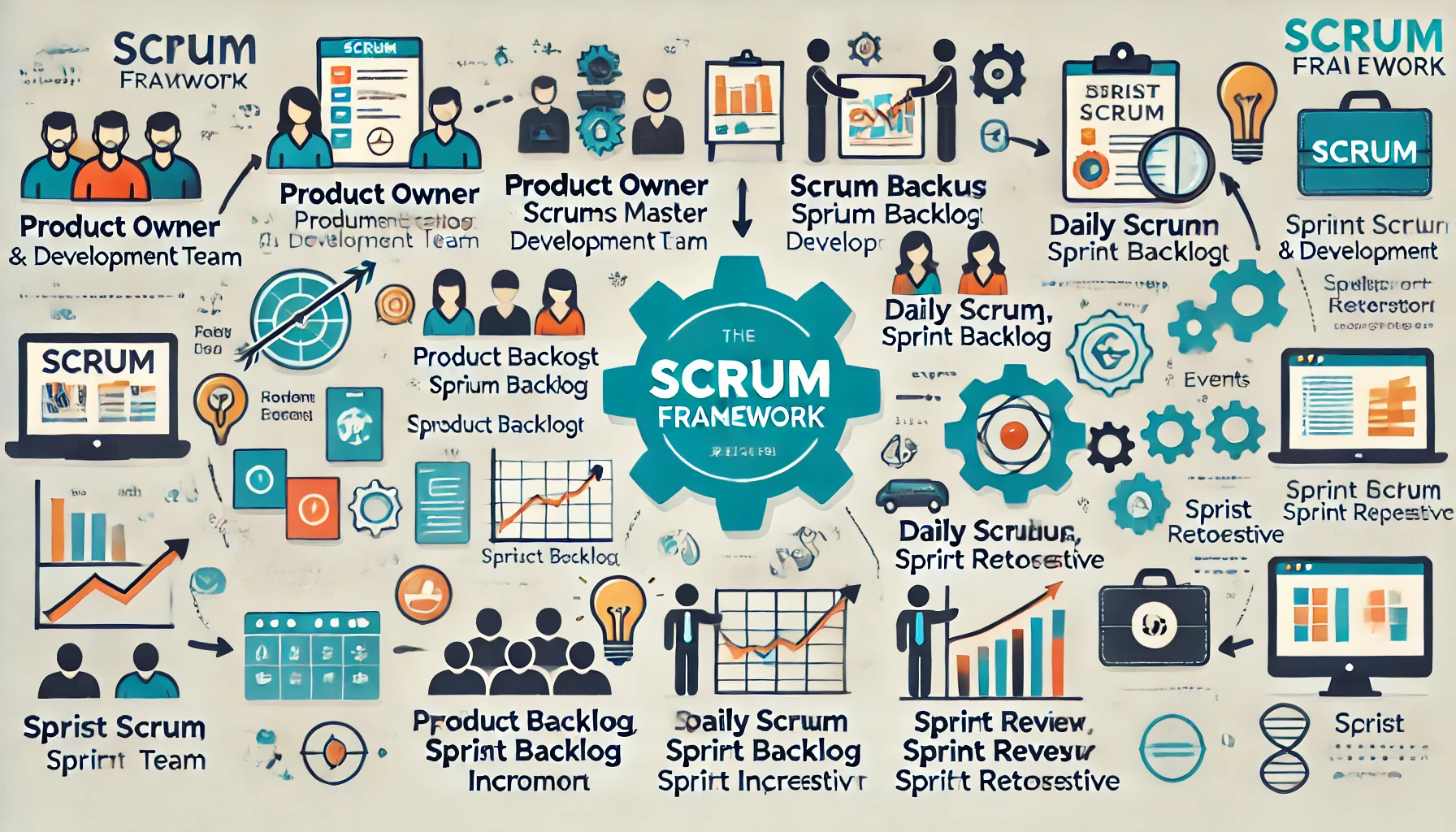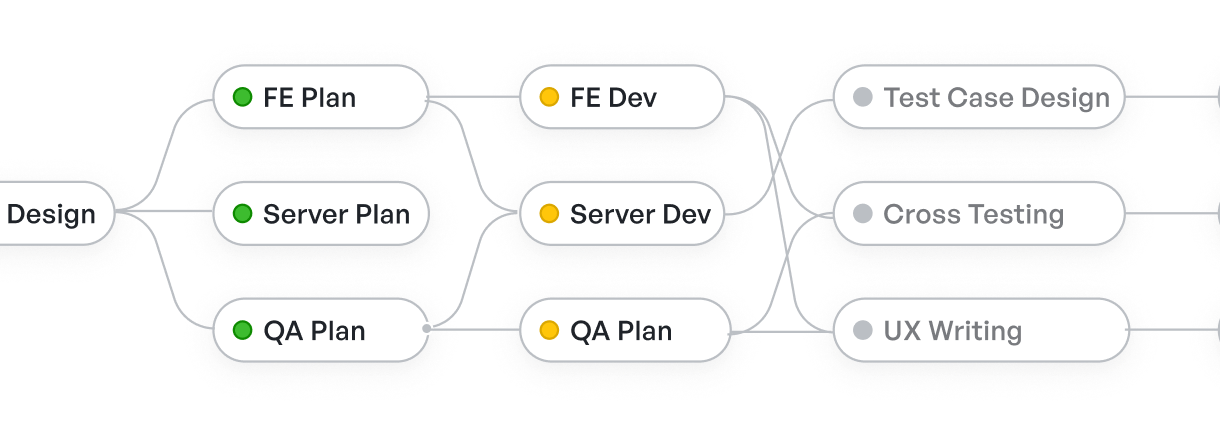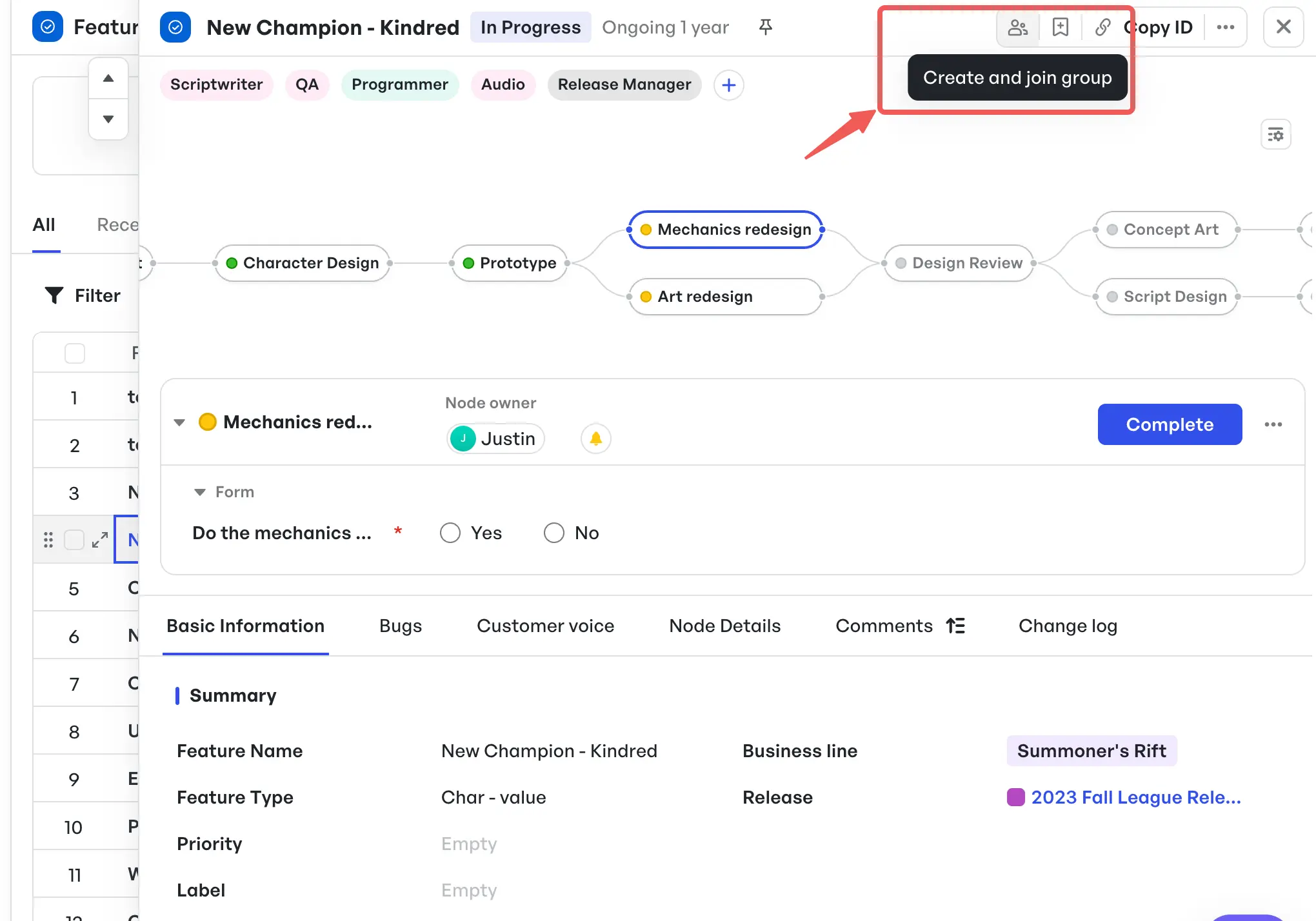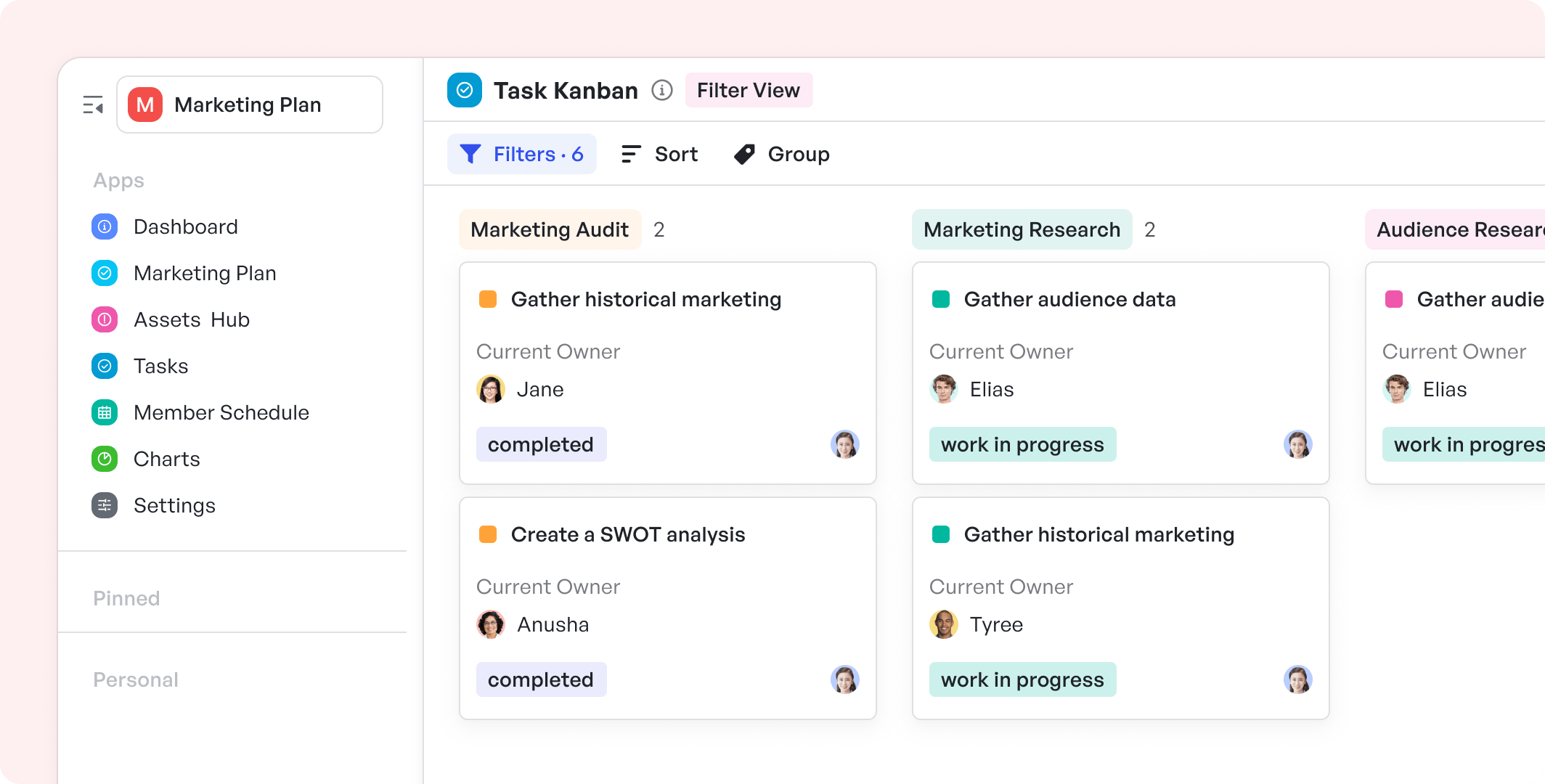How to Implement Scrum in Marketing

Marketing teams often face tight deadlines, rapid shifts in priorities, and collaboration challenges. Traditional project management methods struggle to keep pace with the fast-changing demands of the market. That’s where Scrum, an Agile project management framework, comes into play. Scrum helps marketing teams streamline their processes, collaborate clearly, and increase productivity.
By understanding the Scrum framework and using the right tools, marketing teams can efficiently adapt their processes and achieve stronger outcomes. Platforms like Meegle further simplify Scrum implementation by providing specialized, visual workflows tailored specifically to marketing needs.
Understanding the Scrum Framework
 The scrum framework (Via - ChatGPT)
The scrum framework (Via - ChatGPT)Origins of Scrum
Scrum began in the early 1990s as a software development approach designed to handle complex projects. Inspired by agile principles, Scrum emerged as a structured yet flexible framework aimed at improving team communication, speeding up development cycles, and responding quickly to change.
Over time, Scrum expanded beyond software, gaining popularity among diverse industries, including marketing, for its ability to manage complex projects efficiently.
Core Principles of Scrum
Scrum revolves around three key principles:
- Transparency: All tasks, roles, and expectations are clear to the entire team.
- Inspection: Regular reviews and retrospectives to identify what works and what doesn't.
- Adaptation: Flexibly responding to changes in the market or project scope.
These principles are especially useful for marketing teams, which constantly face shifting consumer demands and evolving market trends.
Benefits of Scrum for Marketing Teams
Enhanced Productivity
Scrum significantly boosts productivity by breaking work into manageable cycles called “sprints,” usually lasting two to four weeks. By setting clear, short-term objectives, teams stay focused and quickly respond to changing market conditions.
 Interconnected nodes and visual workflows in Meegle
Interconnected nodes and visual workflows in MeegleTools like Meegle support this by offering intuitive visual workflows to easily track tasks and deadlines.
Suggested Read:👉Time Management Strategies for Increased Productivity
Improved Collaboration
Scrum enhances collaboration by encouraging regular, structured team meetings. Daily stand-ups and sprint retrospectives improve communication, reducing misunderstandings and ensuring alignment among team members.
 Create and join group chats
Create and join group chatsPlatforms like Meegle make collaboration even easier through built-in features like automatic group chat creation, simplifying teamwork and reducing time wasted on inefficient communication.
You might also be interested in:👉The Future of Team Collaboration
Scrum Process Overview
Workflow in Scrum
Scrum workflow consists of cycles called sprints—usually lasting two to four weeks. During a sprint:
- Sprint Planning: Team defines tasks and sets goals.
- Daily Stand-ups: Short meetings to review daily progress.
- Sprint Review: Assessment of completed tasks.
- Retrospective: Analyzing performance to improve future sprints.
This iterative approach supports rapid feedback and constant improvements.
Key Roles within the Scrum Team
- Scrum Master: Facilitates meetings and ensures the team follows Scrum practices.
- Product Owner: Sets priorities and ensures the team meets business objectives.
- Development Team: Collaboratively executes tasks defined during sprint planning.
Marketing teams effectively adapt these roles by clearly assigning responsibilities aligned with marketing project goals.
Distinguishing Scrum, Agile, and Kanban
Key Differences Between Scrum and Agile
Scrum is an Agile framework. Agile refers to a broader set of methodologies emphasizing flexibility and responsiveness, while Scrum specifically provides a structured way to apply Agile principles with defined roles, events, and artifacts.
Comparison of Scrum and Kanban
While Scrum operates in time-boxed sprints, Kanban emphasizes continuous workflow without strict timeframes. Scrum is more suitable for projects needing clear deadlines and structured collaboration, whereas Kanban better suits ongoing processes. Marketing teams dealing with campaigns benefit from Scrum’s structured sprints, clearly aligning each marketing initiative with defined goals.
Scrum Process Overview
Workflow in Scrum
Scrum workflow is clear and iterative, built around short cycles. Tools like Meegle visualize this workflow, helping marketing teams clearly track progress, identify bottlenecks, and enhance productivity.
Key Roles within the Scrum Team
Scrum clearly defines three essential roles:
- Scrum Master: Facilitates the Scrum process and resolves impediments.
- Product Owner: Prioritizes work based on stakeholder needs.
- Development Team: Executes marketing tasks, producing deliverables each sprint.
Implementing Scrum in Marketing Teams
Establishing a Scrum Culture
Transitioning to Scrum requires cultural changes. Marketing teams should prioritize transparency, clear communication, and openness to feedback. Platforms like Meegle facilitate this shift by providing clear visual representation of tasks, roles, and responsibilities—encouraging teams to embrace Scrum principles effectively.
Aligning Sprint Goals with Marketing Objectives
Marketing Scrum teams must align sprint goals with strategic objectives. Meegle’s visual workflows simplify aligning sprint tasks with overarching business goals, ensuring each task clearly contributes to broader marketing objectives.
Fostering Transparency and Collaboration
Transparency in Scrum means open visibility into tasks, progress, and responsibilities. Meegle supports this through clear visual workflows, automatically assigned tasks, and centralized communication tools. Everyone knows exactly what is expected, preventing confusion and delays.
Scrum Roles in Marketing Teams
Product Owner Responsibilities
In marketing, the Product Owner may be the marketing director or campaign manager, clearly prioritizing the backlog according to business value. They define the goals and ensure the team focuses on tasks most impactful to customers.
Scrum Master's Role
Scrum Masters help teams implement Scrum effectively, remove obstacles, and facilitate smooth collaboration. Marketing project managers typically perform this role, guiding the team and keeping projects aligned with business goals.
Development Team Functions
The marketing development team includes content creators, designers, analysts, and other specialists collaborating closely. Scrum enhances their productivity by clearly defining tasks within each sprint, fostering efficient collaboration.
Implementing Scrum effectively requires tools designed specifically for marketing workflows. Meegle offers specialized Scrum templates—like the Marketing Plan, EDM Marketing, and E-commerce Business Plan—to help marketing teams easily organize projects, streamline collaboration, and accelerate execution. Here’s how each template can empower your team to efficiently adopt Scrum and enhance your marketing outcomes.
Marketing Plan Template
 Meegle's marketing plan template
Meegle's marketing plan templateEasily map out your entire marketing strategy, from setting goals to measuring results. This Meegle template clearly organizes tasks, timelines, and responsibilities, simplifying complex marketing initiatives.
E-commerce Business Plan Template
 Meegle's e-commerce business plan template
Meegle's e-commerce business plan templateSimplify your e-commerce projects using Scrum workflows tailored for marketing tasks like inventory management, promotional planning, and campaign execution. Easily visualize processes, coordinate teams, and accelerate your retail success.
Email Marketing Template
 Meegle's EDM marketing template
Meegle's EDM marketing templateMeegle’s Email Marketing Template helps marketing teams streamline email campaign workflows using Scrum. Teams can clearly define tasks—from content creation and design to testing and final deployment—in structured sprints. The visual workflow highlights every step, including planning email sequences, designing assets, copywriting, approvals, and analyzing performance. By clearly assigning responsibilities, tracking deadlines, and facilitating smooth collaboration, Meegle ensures your email campaigns launch on time and deliver measurable results. This approach reduces confusion, increases accountability, and boosts overall email marketing productivity.
Case Study of Scrum in Marketing with Meegle
 POP MART used Meegle for project scheduling
POP MART used Meegle for project schedulingPOP MART: Agile Marketing Success
POP MART, a global retail brand, successfully adopted Scrum using Meegle. Initially, POP MART faced inefficiencies, missed deadlines, and ineffective communication. By implementing Scrum with Meegle’s visual workflow templates, the team clearly improved collaboration, reduced bottlenecks, and increased project completion rates by 30%.
Key lessons learned:
- Clear role assignments increased accountability.
- Visual workflows improved communication and visibility.
- Iterative cycles reduced project delays significantly.
This real-world success demonstrates how Meegle’s Scrum framework significantly enhances marketing productivity.
Mastering Scrum Techniques in Marketing
Continuous Improvement in Scrum Practices
Scrum’s effectiveness relies on ongoing improvements. Marketing teams should consistently use retrospectives to assess what worked and what didn’t, refining processes each sprint. Meegle simplifies this with integrated retrospective tools, helping teams clearly identify improvement areas and track progress effectively.
Tools and Software for Managing Scrum
Implementing Scrum effectively requires supportive tools. Meegle’s marketing-specific templates, clear visual workflows, and collaboration features streamline the Scrum process, allowing teams to track, measure, and improve performance clearly.
Measuring Success: Metrics to Track in Scrum
Key metrics for marketing Scrum implementation include:
- Sprint Velocity: Measures tasks completed per sprint.
- Time-to-Market: Tracks how quickly campaigns launch.
- Task Completion Rate: Shows overall team productivity.
- Customer Engagement: Indicates effectiveness of campaigns.
Meegle provides real-time tracking of these metrics, clearly enabling marketing teams to evaluate performance and make rapid adjustments.
Listen to the podcast: Overcoming Scope Creep with Agile Project Management
Challenges and Solutions in Scrum Implementation
Scrum implementation in marketing can face resistance, particularly in teams accustomed to traditional methods. Common challenges include unclear roles, initial complexity, or skepticism. To overcome these:
- Provide ongoing Scrum training to build competence and confidence.
- Gain clear executive support to demonstrate organizational commitment.
- Leverage Meegle’s intuitive interface to simplify Scrum adoption and clarify responsibilities.
Integrating Scrum with Traditional Marketing Approaches
Scrum complements traditional marketing by adding agility and responsiveness without entirely replacing established processes. Marketing teams can integrate Scrum principles incrementally, combining traditional project management techniques with Agile practices supported by Meegle’s adaptable workflows.
Recommended Scrum Tools and Software for Marketing Teams
Choosing the right Scrum tool greatly impacts implementation success. Meegle offers several powerful benefits:
- Marketing-specific Scrum templates that speed setup.
- Clear visual workflow management that improves transparency.
- Easy collaboration tools that simplify communication.
By adopting Meegle, marketing teams quickly realize Scrum's advantages, accelerating time-to-market and project quality.
Discover Agile Marketing with Meegle
Scrum provides marketing teams the agility, clarity, and responsiveness needed in today's dynamic market. Clearly defined roles, structured sprints, and continuous improvement cycles deliver significant productivity and collaboration gains. Using Meegle’s specialized marketing templates, your team can quickly adopt Scrum and achieve faster, higher-quality outcomes.
Ready to transform your marketing project management?
Streamline campaign planning and stay sprint-ready with Meegle’s agile marketing workflows today.
The world’s #1 visualized project management tool
Powered by the next gen visual workflow engineRead More
Check All BlogsStart creating impactful work today



